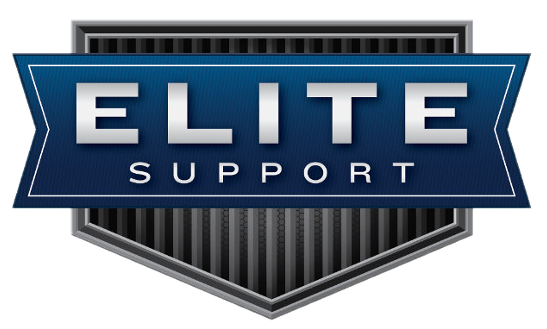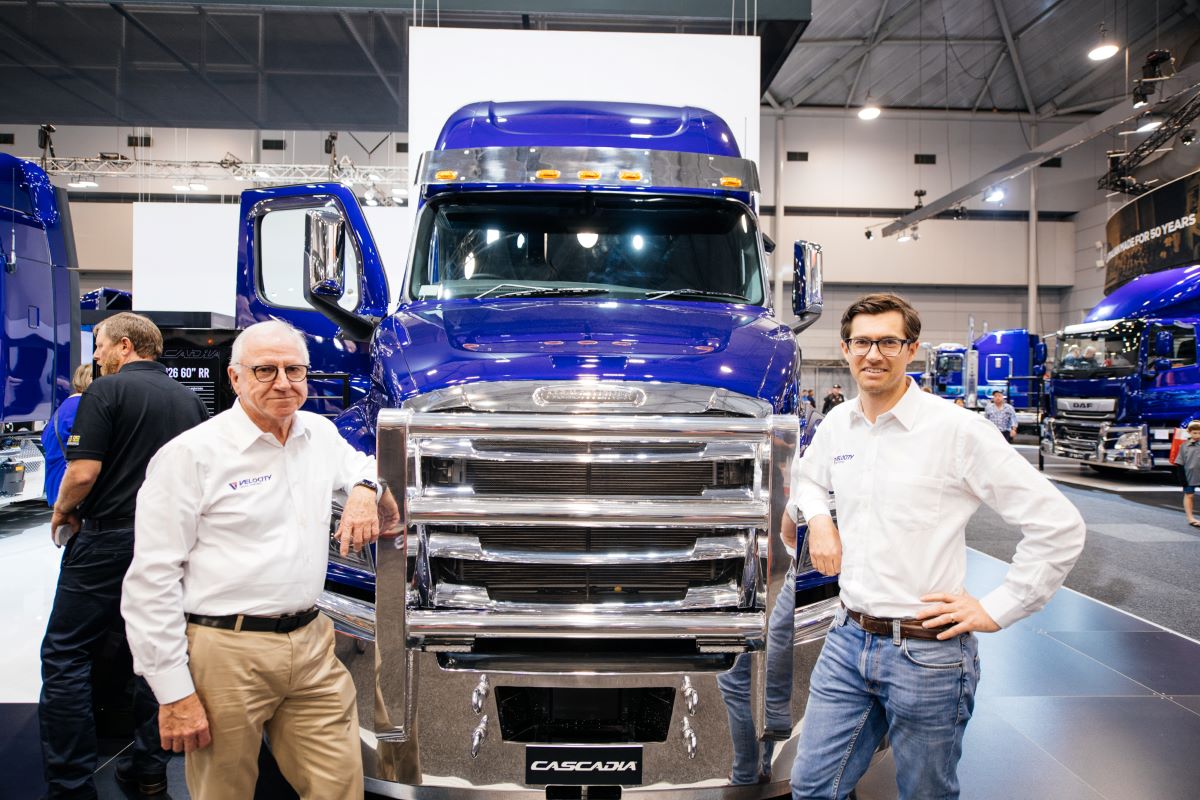Velocity Vehicle Group is one of North America’s largest Daimler Trucks dealership networks with more than 50 dealer locations. It’s local mission is to bring Speed, Value and Trust for all of its Australian customers.
It was major news late last year when word spread that Velocity Vehicle Group was planning to take over all 15 Daimler Truck and Bus dealerships formerly operated by the Eagers Automotive Group.
With the deal formerly completed in May, Prime Mover sat down with Velocity’s Executive Vice President Richard Higgins and Senior Vice President Dan Stevens to discuss how such a major investment will help it deliver world-class service to the Australian truck market.
PM: Was it an approach from Australia or an approach from Daimler Trucks North America for this relationship to develop or did the circumstances all just come together anyway?
DS: The short version is I was a truck dealer in the States and Velocity Vehicle Group Co-President Brad Fauvre and I served together for many years on the Dealer Council and as chairmen at different times. I sold out my interest in the business which was the Lone Star Truck Group and Tag Truck Centres which were Freightliner and Western Star dealerships. I knew Greg Lovrich at Daimler Truck and Bus in Melbourne because he would bring Australian dealers over to the States and we would tour facilities, so Greg asked me to come to Australia in a consultancy role which I did in 2019 and 2020 until COVID ran us out. It looked like the truck part of the Eagers business wasn’t the most attractive to them and so we talked with Brad Fauvre and one thing led to another.
PM: Is the overall plan as straightforward as replicating the US business model in Australia?
RH: The challenge for us is to look at what works well in the US, what works well in Australia and figuring out the right combination. It’s by no means a case of simply employing everything as they do in the US. In my experience with Velocity, they are relentlessly focused on the customer experience, and are very transparent internally about performance against the sort of metrics customers care about. The business we bought (Eagers’ truck and bus dealerships) is not a bad business and there’s lots of good stuff there along with lots of great people. We’ve got a different brand portfolio here, the geography’s a bit different, and so is the customer base. So there are lots of things we need to work through before we make any radical changes.
PM: How important is the relationship between OEM and dealer?
DS: Ten or 12 years ago in the US we got the Freightliner Cascadia and we got a jump in market share, not unlike the Mercedes-Benz product out here. We had a better product which meant we sold more trucks. But some customers came to us and said: “hey we’ve got more tucks on the road and now we’re having trouble getting them serviced. It takes too long to get in, the truck is there too long, and your people sometimes forget to call back. You’ve got to do a better job or we can’t keep adding trucks.” Those complaints went to DTNA and the dealers and we realised we had to do something. That’s where this whole Elite support initiative got launched. It started this long journey of trying to improve processes first between DTNA and us, and we ironed out a lot of those differences. The benefit of that is it automatically flows through to the customer. We had the situation where we couldn’t get weekend technical support because they work Monday to Friday 8 to 5 and we work seven days a week. We’d have arguments about what’s warrantable and what’s not. We quickly got technical support over weekends and expanded parts distribution centres. We got to call warranty decisions on the spot and then settle later so we don’t inconvenience the customer. It was a whole series of things like that and over the following ten years we improved the customers’ experience a lot.
PM: In the US we’ve seen a satellite workshop run by dealer within fleet customer’s own premises. Is that unique or typical?
DS: It’s actually becoming more typical all the time. We have technicians domiciled in customers’ premises where they are doing all of the warranty work and services. We do some of that here in Australia already and it would be a goal to expand that. Having said that, as in North America, technicians don’t grow on trees. I actually think your apprentice program here is superior to anything we have in America. You have a very structured apprentice program, you can show the people a path forward, and you have subsidies to help. In the US we really don’t have that and kids are pretty much on their own. A dealer may come up with a plan on his own but there’s not a real apprentice structure. When I walk through our workshops in Australia the average age of the technicians here is younger than the average age of technicians in the States and I think that bodes well for Australia.
PM: How do we counter the skills shortage?
RH: It’s a similar challenge here and we need to do a better job of bringing young people into apprenticeships.
DS: I think we do a lousy job of letting young people know what a great industry we are to work in. They still think we’re dirty old nasty workshops and the truth is we have modern facilities where safety is the primary concern. We’re more electronic-driven which the younger people like and are really good at, but they also need to know they can make a really good living in our industry. We’ve just done a poor job in the States of attracting people.
PM: Do you look for salespeople who have a good understanding of the underlying mechanics of the vehicles or do you look for someone who is more focused on selling?
DS: Daimler spends literally billions of dollars on research and development and they bring out these extremely technologically advanced products. In the beginning we’d give the owner the keys and he’d put a driver in the truck, who hadn’t been properly trained in how to extract the value in the technology, and he’d come back and say this isn’t what you said it could do. It’s because the driver is driving the truck as if it was the old technology. What we learned is we have to introduce the product and there has to be a training segment that is every bit as important as the sales process. It’s the familiarisation and orientation process – this is how this machine works, this is how you attract the best fuel economy, this is how you prevent downtime. It’s a process and it takes a lot of planning. I think we’ve got a lot of that to do here because the Cascadia in particular is still pretty fresh. The Mercedes-Benz has all that sophistication too, so we’re a little bit ahead of it.
PM: Is it a case of the market expecting a high level of technology in a Mercedes-Benz but maybe they don’t expect as much from American style trucks?
DS: The Cascadia is an extremely sophisticated piece of equipment and there will certainly be an early effort to ensure that level of training is available.
PM: In the US Velocity is essentially exclusive to the Daimler brands. Will it be the same here?
DS: We are absolutely Daimler-only here and it’s our total intention to be Daimler- only.
RH: We have a slightly different truck mix in Australia because they don’t sell Mercedes-Benz in the US.
DS: We don’t sell cab overs. We haven’t sold a cab over in the States since 1982.
RH: And they don’t do nearly as much with Fuso in the US, but they do have Western Star which is the other Daimler brand. So it’s a bit of a different mix.
PM: Without pre-empting your business plan, does it stop at Eagers?
RH: Right now we’ve got our hands full and we’ve got a lot to deal with.
#community #latestnews #freightliner #fuso #mercedesbenz #daimlertruckandbus #velocityvehiclegroup
COPYRIGHT BELONGS TO ORIGINAL ARTICLE: https://www.primemovermag.com.au/the-real-deal/




